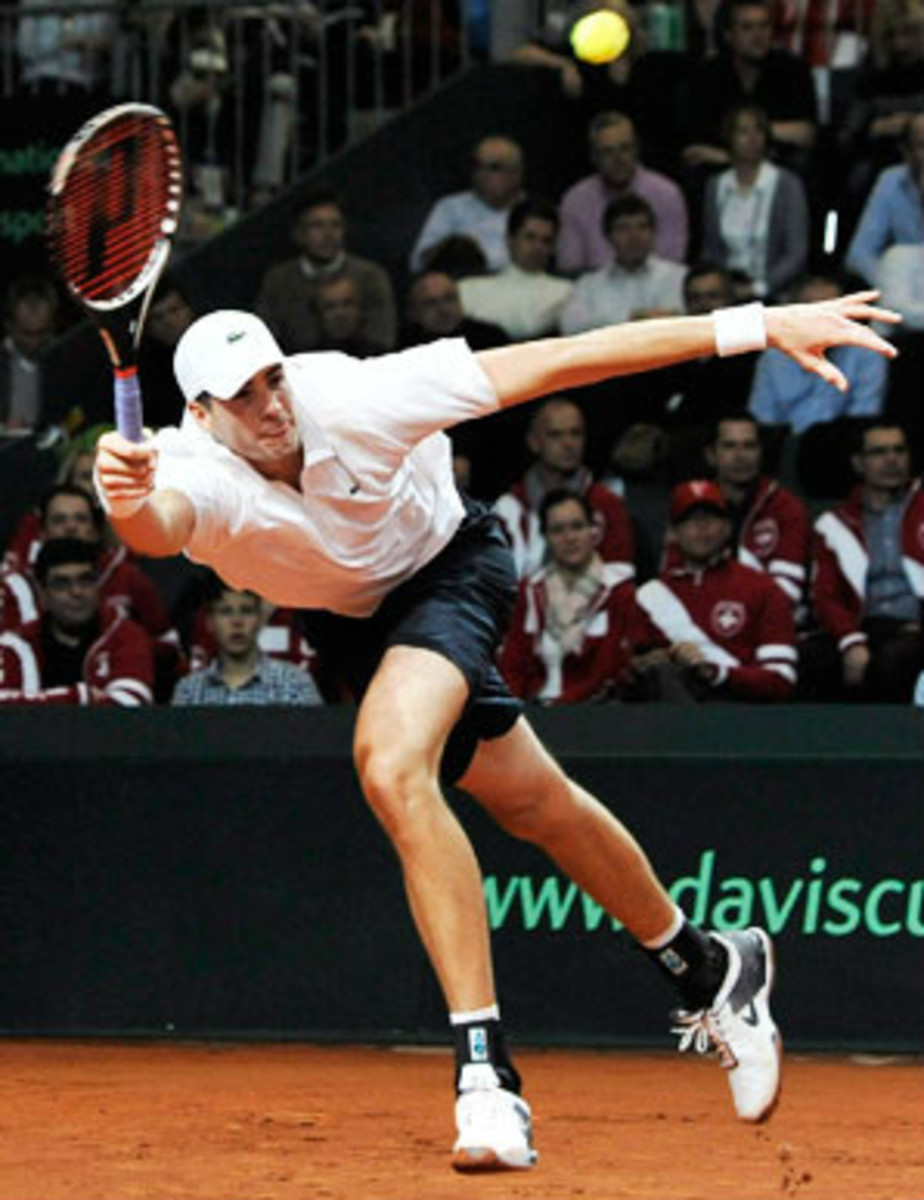Roland Garros the U.S.' kryptonite, but Isner, Serena provide hope
That was 1954 -- and if you're wondering how often such a thing has occurred since then, the answer is never. A U.S. player breaks through on occasion, but 58 years have passed since there was dominance on both sides of the draw.
Maybe you'd be a fool to bet on Serena Williams and John Isner at this year's French, but I'll bet the weekend changed your thinking about Americans on clay.
Williams was so dominant in her title run at Charleston, it seemed irrelevant that so many top players -- including Victoria Azarenka, Caroline Wozniacki, Petra Kvitova and Agnieszka Radwanska -- were missing. Serena left the impression that she would have crushed them all. Cliff Drysdale and Pam Shriver could hardly contain their amazement on the ESPN2 telecast, and colleague Rennae Stubbs called it Serena's best performance since she won the 2009 Wimbledon.
People have grown to expect a resurgent Williams in the wake of a long layoff, but the fact that it came on clay -- a surface on which she'd gone four years without winning a title -- marked a significant stage of her career. How did it happen? Stubbs revealed that Williams has switched to hybrid strings on her racket, and the element of control seemed evident in her unerring groundstrokes. She claimed she could have served better, although that surely was a laughable notion to Samantha Stosur and Lucie Safarova, both of whom were routed on the final weekend. Especially telling was Serena's proclamation that "I feel way fit."
She certainly feels in a clay-court sort of mood, lining up Madrid and Rome on her pre-Roland Garros schedule and announcing that she's moving to Paris, her favorite city in the world. Mostly, though, this is about Williams' renewed health and incomparable brand of on-court command.
When you're up against an all-time great player at her best, Shriver said at one point during the final, "It is smothering, suffocating, uncomfortable, intimidating -- you almost feel like you're breaking out in hives."
Better yet, Williams played virtually the entire match in silence, a highly refreshing development for fans put off by Azarenka's and Maria Sharapova's inexcusable howling. "Silent," wrote Bobby Chintapalli on Tennis.com, "but in some ways deafening."
Thousands of miles away, in the elegant setting of the Monte Carlo Country Club, Isner clinched the U.S. Davis Cup victory with a convincing 6-3, 7-6 (4), 5-7, 6-3 win over Jo-Wilfried Tsonga. Isner has become nothing short of a force on clay, including a Davis Cup victory over Roger Federer in Switzerland, and he is unquestionably America's No. 1 choice for this event on any surface.
It has long been apparent that Isner's collegiate experience makes him the perfect candidate for a team sport in a hostile setting. But here's the news: Isner's game is stunningly on the rise. His backhand and return have improved immeasurably, he is absolutely fearless in a crisis, and he has developed a fine sense of touch, from his crisp volleys to his well-timed drop shots. All of which prompted Matt Cronin to write, "Recent form is making Isner look like the fifth best player in the world."
Here's the definition of confidence under daunting circumstances: Serving at 5-6 and 0-15 in the second set, Isner tried a forehand drop shot from just inside the baseline, and it fell badly short. One felt the onset of a major momentum shift toward Tsonga. Instead, Isner served his way out of trouble -- and at 1-1 in the tiebreaker, he hit that same drop shot, from the same spot, for an elegant winner.
"I'm not shying away from clay," Isner said. "I think it is a very good surface for me. I have the tools to compete with these guys, and I take the court believing I can win, no matter who I'm playing against."
Just for fun, let's say Williams and Isner each make a run for the French Open title. Just how bleak is the U.S. history in this event?
First, it should be noted that while Jim Courier and Monica Seles won the French singles titles in 1991 and '92, Seles was competing for Yugoslavia at the time. Since then, the only U.S. winners were Andre Agassi (1999), Jennifer Capriati (2001) and Williams (2002).
It's a good thing the Chris Evert-Martina Navratilova rivalry became such a fixture at the French (Evert had a remarkable seven wins overall), because the place generally spells doom for American stars -- if they even bothered to show up.
Tracy Austin: Played it only three times, in 1982-83 and again in '94 during her final comeback attempt. A quarterfinalist in '82 and '83, she lost in the first round her third and last try.
Lindsay Davenport: Lost twice in the first round. Best showing in 12 tries was a semifinal appearance in '98.
Venus Williams: The '02 event marked her only final, and a loss to Serena. She hasn't been past the quarterfinals since.
Jimmy Connors: Missed the French five straight years during his prime (1974-78), and never reached the finals. The man won 109 career titles, but none here.
John McEnroe: Missed it six times in 16 years, lost in the first round three times, and will always regret losing that 1984 final to Ivan Lendl after winning the first two sets.
Pete Sampras: Winless in 13 tries, and lost in the following rounds over his last six appearances: 3rd, 2nd, 2nd, 1st, 2nd, 1st.
Andy Roddick: Never past the fourth round in nine tries, eliminated in either the first or second round in six appearances.
That's beyond bleak. That's a veritable Sahara Desert of futility. What happened on clay last weekend, ideally, was no mirage.





